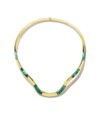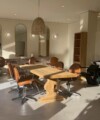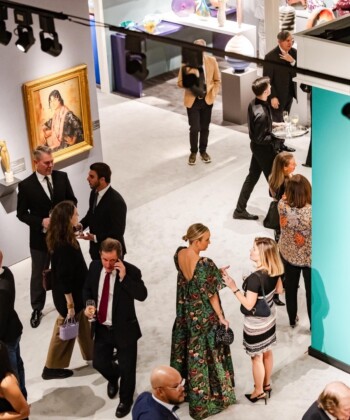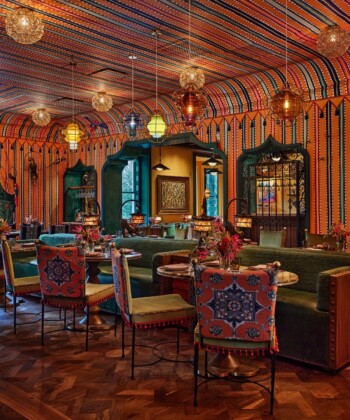In New York City, an apartment’s light and views are second only to its size and location. So it’s easy to see why developers have been so besotted by glass towers, offering as they do an efficient way to maximize both famously scarce resources.
But living in a glass box is not for everyone, as the wild success of nouveau pre-war 15 Central Park West demonstrated half a dozen years ago. These days, developers are eager to cater to old-fashioned tastes as well as rigorously modern ones, leading not only to a renewed appreciation for pre-war layouts, but also a revival in century-old crafts and building materials.

A living room in 1 Great Jones Alley.
When contemplating what to build on a coveted High Line–adjacent site, developer Michael Stern decided that the area’s futuristic ribbons of glass could use “a counterpoint—something that looked like it was built 100 years ago,” he says. The Fitzroy, as JDS Development Group’s West Chelsea project is called, will have a copper-trimmed exterior of green terra-cotta made at a 112-year-old European factory—a throwback to landmarks like the Woolworth Tower and Alwyn Court.
The developers of 1 Great Jones Alley, on the other hand, were seeking context, not counterpoint, for their NoHo project. Channeling the area’s industrial history, the condo’s façade blends Corten steel and hand-finished terra-cotta baguettes. The private entrance, meanwhile, will be paved with Belgian block sourced from a salvage yard in South Carolina.

A kitchen in The Fitzroy.
“These kinds of materials create a sense of authenticity—you’re creating not just an apartment, but someone’s home,” says Dan Cobleigh of Madison Capital Realty. He warns, however, that such materials, while suited to a project with 16 bespoke apartments, “are very expensive and don’t translate to a large building.”
Still, new old-fashioned projects do sell briskly—at the Brodsky Organization’s 135 East 79th Street, which wooed buyers with hand-carved pear trees framing the entrance, 24 of the 29 units were purchased based on floor plans alone.
“We’re selling a value proposition to our buyers,” Stern notes. “We’re giving them materials that get better with time.”
All Images: Courtesy






































